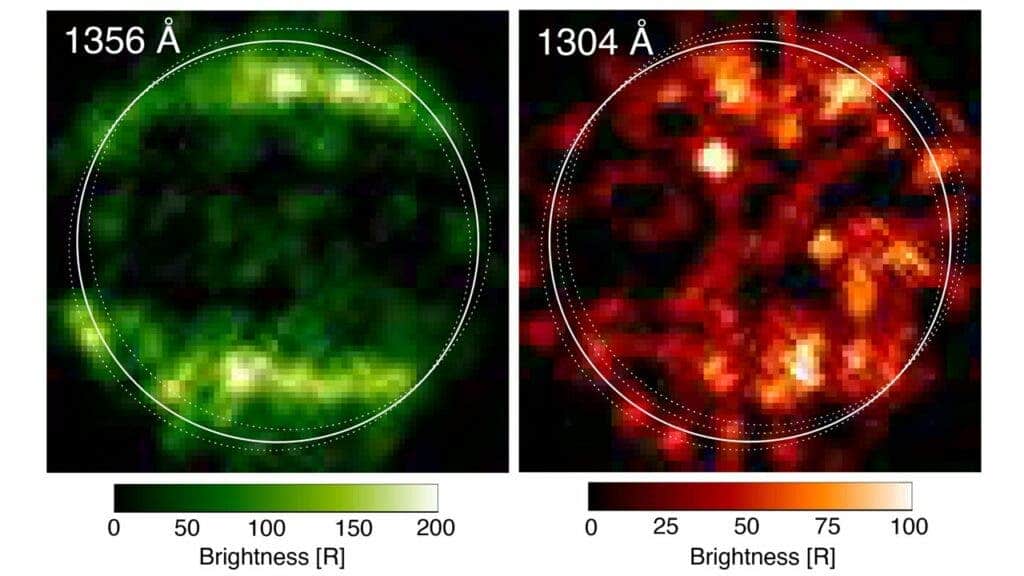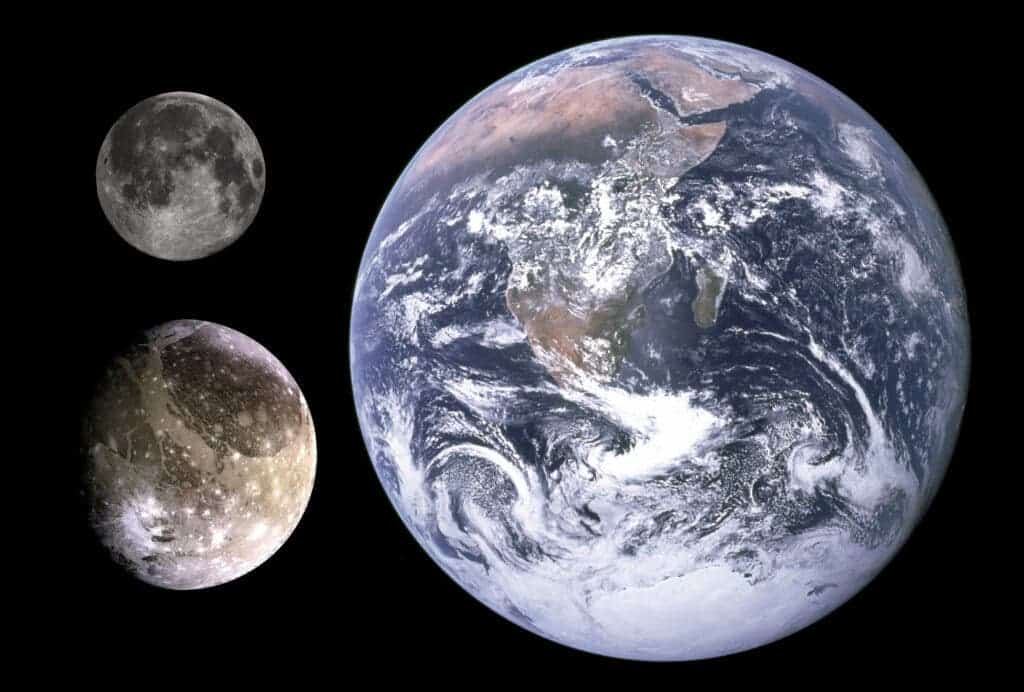For the first time, we have strong evidence of water vapor in the atmosphere of Jupiter’s moon Ganymede — the largest moon in the solar system. Researchers suspect the frozen water on Ganymede’s surface sublimated, going straight from solid to gas, without being liquid.

Ganymede’s surface is a mixture of dark, cratered regions and light grooved terrain that forms intricate patterns. Researchers have suspected for quite some time that Ganymede has a lot of water — perhaps more water than the Earth — but since Ganymede lies so far from the Sun, water could only remain liquid under a thick layer of ice.
Ganymede is thought to have three main layers: a metallic iron core, a rocky mantle, and a layer of water, both liquid and frozen. The ice shell on the outside is very thick (around 500 miles / 800 km) and any liquid water could lie below this crust. Nevertheless, though, there is water — and where there is water, there could be life.
Now, for the first time, researchers have found evidence of non-ice water on the surface.
As part of a larger observation program, Lorenz Roth of the KTH Royal Institute of Technology in Stockholm, Sweden was using Hubble to measure the amount of oxygen on Ganymede. Roth and his colleagues used data from two instruments: Hubble’s Cosmic Origins Spectrograph in 2018 and archival images from the Space Telescope Imaging Spectrograph (STIS) from 1998 to 2010.

The UV data showed the presence of atomic oxygen — at least that’s what the original interpretation from 1998 noted. But much to their surprise, Roth’s team found hardly any evidence of atomic oxygen in Ganymede’s atmosphere. If this is the case, there must be another explanation for the apparent differences in these UV aurora images.
When the researchers took a closer look at the relative distribution of the colorful ribbons of electrified gas called auroral bands in the UV images, they found another piece of evidence: Ganymede’s surface temperature varies strongly throughout the day. Around noon, the equatorial parts of Ganymede may become sufficiently warm that the ice surface releases (or sublimates) some small amounts of water molecules.
This fits excellently with the Hubble data. The presumed oxygen (which Roth now believes to be water vapor) was found exactly around the equator.
“So far only the molecular oxygen had been observed,” explained Roth. “This is produced when charged particles erode the ice surface. The water vapor that we measured now originates from ice sublimation caused by the thermal escape of water vapor from warm icy regions”.
The finding makes Ganymede a much more interesting place, especially considering the European Space Agency’s upcoming mission. JUICE (JUpiter ICy moons Explorer) is planned for launch in 2022, and arrival at Jupiter in 2029. The mission will spend three years making detailed observations of Jupiter and its largest moons — including Ganymede.
“Our results can provide the JUICE instrument teams with valuable information that may be used to refine their observation plans to optimize the use of the spacecraft,” added Roth.

Astronomers are increasingly looking at frozen moons around Jupiter and Saturn as places where life could emerge. They were once discarded as barren, frozen wastelands, but the more we look at them, the more the potential habitability of these moons seems increasingly likely. Of course, just because there could be life on Ganymede doesn’t mean there is — that’s up for future research to discover.
The study was published in Nature Astronomy.









